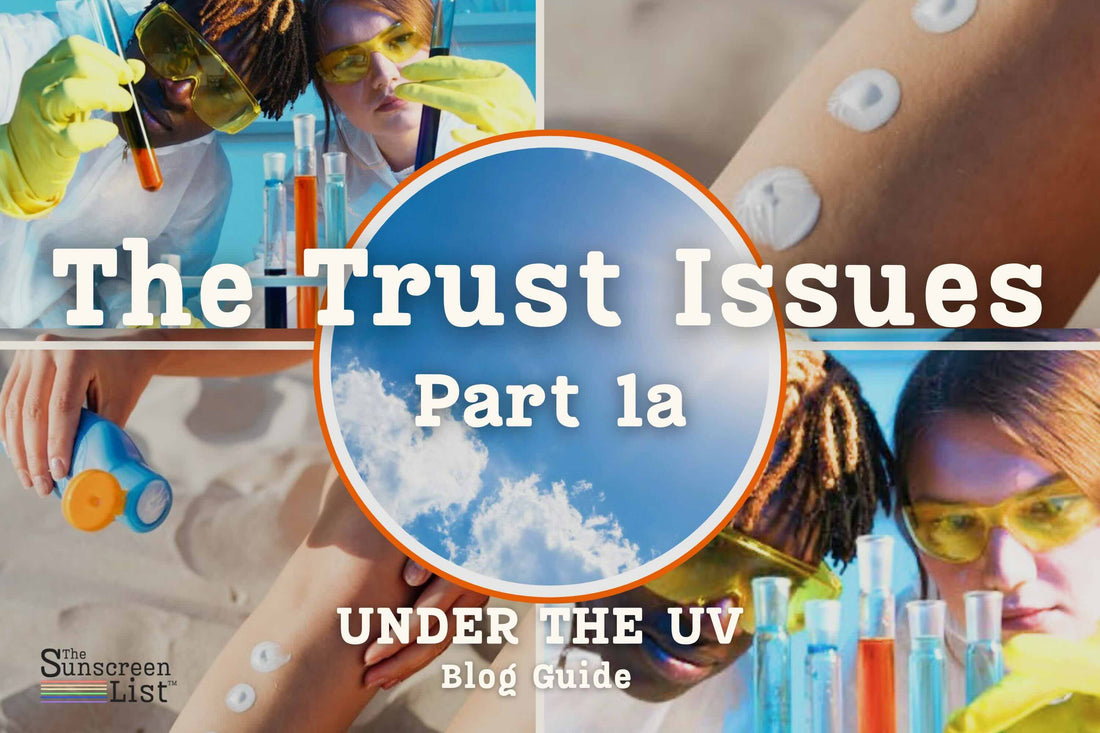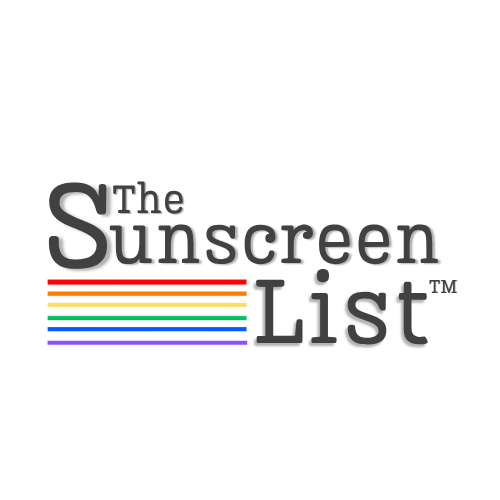
The Trust Issues | Part 1a - What Sunscreen Labels Don’t Tell You
Share
🧴 SPF Testing 101
You’ve seen it before: SPF 30, SPF 50+, “Broad Spectrum,” “Water Resistant.” But have you ever wondered how those numbers (and claims) actually get on the bottle?
Spoiler: it’s not guesswork. Sunscreens go through serious lab testing before they can make those claims — but the process isn’t perfect.
Here’s the breakdown (Here’s the breakdown — just the science, minus the noise).
Image of SPF virtual testing in a laboratory. Photo Credit ALS Global, Abode Shutterstock
1️⃣ SPF = Tested on Real People
Yep, humans. In a lab. Scientists apply sunscreen to tiny patches of skin (usually on the back), then shine UV light on it. They measure how long it takes for skin to turn red compared to unprotected skin. That ratio = your SPF number.
👉 Example: If skin lasts 30x longer before burning, it’s SPF 30.

Image: Laboratory UV light testing SPF (Sun Protection Factor) on a human subject. Photo credit Pexels
2️⃣ Broad Spectrum = UVB + UVA
SPF only measures UVB (the burn rays)*. But we also need protection against UVA (the sneaky ageing + cancer-causing rays).
*Neither UVA/UVB are exclusive to these descriptions, they both contribute to the effects of aging, burning and ultimately the risk of melanoma cancer.
👉 Traditionally, like in the early 90’s, sunblock just blocked UVB - burn rays. To earn “Broad Spectrum,” a sunscreen now has to prove it blocks enough UVA too. Look for Broad Spectrum SPF — never settle for plain SPF alone.
Even the word #sunblock is not scientifically correct for chemical sunscreen, the term "sunscreen" became more established with the introduction of Sun Protection Factor (SPF)in the 1960s, which allowed for more scientific, transparent, and cosmetically acceptable products compared to the heavy physical pastes previously known as sunblock.

Image: Mum applying SunSafe® sunscreen to her son at the beach. Photo credit Kampus.
3️⃣ Water Resistance = Pool Test💦
“Water Resistant 2 hours”? That’s not a promise it clings to your skin forever. It means the formula was tested while volunteers sat in water for that amount of time, and it still held its SPF.
👉 Once the time is up, or if you feel like its wishy washy, you reapply or risk frying.

Image: Boy by the pool wearing sunscreen. Photo credit Kampus
4️⃣ Not All Batches Are Perfect - Even the Best Sunscreens Slip Up
Here’s the kicker: SPF results can vary between labs, and even between different batches of the same sunscreen. That’s why you sometimes see headlines about sunscreens “failing” consumer tests. It doesn’t mean the whole brand is dodgy — but it does show why extra oversight (👋 SunSafe®) matters.

Image: Beach test, sunscreen is tested on humans, usually under controlled light in a laboratory. Photo: Pexels.
5️⃣ The Label Has Rules (Mostly)
In Australia, sunscreens are regulated by the TGA. Brands legally have to test, prove, and back up their SPF, broad spectrum, and water-resistant claims. Misleading labels = not just shady, but illegal.
👉 Problem: Regulators can only test so much. That’s why watchdogs (like CHOICE) often catch sneaky fails.

Image of boy wearing sunscreen in the shape of a sun by the pool Image credit: Kampus.
💜💙💚💛🧡❤️ Why SunSafe® Cares
Testing is essential — but it’s not bulletproof. That’s why we built the SunSafe® certification.
Every product we list is checked against the regulated SPF testing standards, plus expert oversight from dermatologists, paediatricians even marine ecologists, so you know the label matches the protection and the recommended use.
Because if you’re putting in the effort to lather up, your sunscreen better be doing its job.

Image: Boy boogie board practising on the sand at the beach wearing sun protection. Photo credit Kampus.
⚡ Now we trust this ⤵️
- SPF is tested on real skin, in labs
- SPF Broad Spectrum = UVB & UVA protection
- Water resistant ≠ waterproof (always reapply!)
- Sunscreen quality can vary batch to batch
- Labels are regulated, but fails happen — so trust platforms that double-check 👀
Image of adorable scientists, not our scientists. Photo credit Artem Podrez
♾️ Tried and Tested, the Real References:
- ARGS - Australia's Regulartory Guidelines for Sunscreen
- TGA -Statement on Chioce Report
- SPF testing procedures - Australia
- GBA Group Water Testing of SPF
- Chioce Test Results
- Sunblock
- Live Science
- ALS SPF Testing in lab
- Eurofins SPF Testing Overview
- RTL Today — Can sunscreen really be trusted?
🔎 Disclaimer
The Sunscreen List™ does not run independent sunscreen testing. Instead, we rely on accredited lab reports supplied by our SunSafe® brands as part of the certification process.
Over time, we’ll share which testing facilities our SunSafe® brands use, so you know their protection claims are backed by credible science.
Need to read the first Part?
When the SPF hit the fan...

Check your sunscreen: Did it make The List™?


